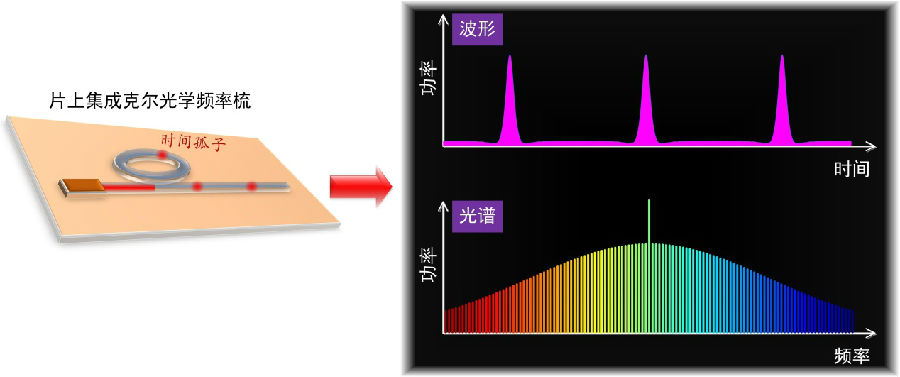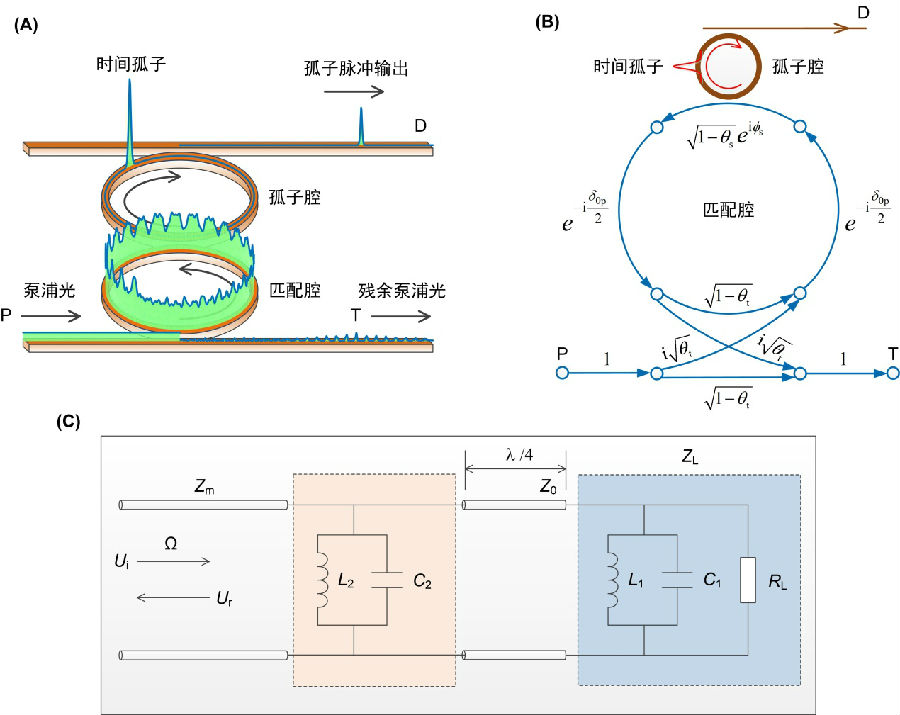On May 13, Assistant Professor Xue Xiaoxiao, Professor Zheng Xiaoping, and Professor Zhou Bingkun from the Department of Electronic Engineering, Tsinghua University published a research article entitled "Super-efficient temporal solitons in mutually coupled optical cavities" inNature Photonics. In the research, a new method to significantly improve the energy conversion efficiency of temporal optical solitons was proposed, thus pointing out the direction for the realization of on-chip integrated high-efficiency Kerr optical frequency comb.
The Kerr optical frequency comb is abbreviated as the Kerr comb. It uses the nonlinear optical Kerr effect in the miniature cavities to convert the single frequency laser into the broadband optical frequency comb with a large number of equally spaced frequencies. In the mode-locked state, a stable phase relationship between various frequency components of the optical frequency comb is maintained, and an ultrashort optical pulse sequence is generated in the time domain and called the temporal optical soliton (Photo 1). Compared with traditional optical frequency comb light sources, Kerr comb has outstanding advantages such as small size and high pulse repetition frequency, so it is considered as a revolutionary technology. However, the energy conversion efficiency of Kerr comb is very low, usually only a few percentage points. The extremely low energy conversion efficiency has become a major bottleneck hindering the application of Kerr comb. Xue Xiaoxiao's research group previously wrote an article in theLaser & Photonics Reviewsmagazine, in which, the internal connection between the energy conversion efficiency of Kerr comb and the time domain duty cycle of the soliton pulse was revealed, the traditional soliton state can't achieve high conversion efficiency even in the ideal condition completely without loss of cavities, so we need to think of other ways of achieving high-efficiency Kerr comb.
In the research reported this time, the research team used the impedance conversion and matching methods in the classic microwave transmission line theory, proposed the dual-cavity structure for recycling and reusing laser energy (Photo 2), and established a complete set of mutually coupled non-linear Schrodinger equation, through which the efficient soliton solution is obtained. In the experiment based on fiber ring cavities, the research group achieved light energy recycling and reusing close to 100%. The experimental results are exactly consistent with the theoretical analysis, thus breaking the efficiency bottleneck of the traditional single cavity Kerr comb. The high-efficiency on-chip integrated optical frequency comb is expected to play an important role in promoting miniaturized optical atomic clocks, microwave photonics, large-capacity optical communications, precision spectral measurement and other applications.
Assistant Professor Xue Xiaoxiao is the first author and corresponding author of the paper, and Tsinghua University is the only completion unit. This research was funded by the major project of the National Natural Science Foundation of China, the international cooperation project of the National Natural Science Foundation of China, and Beijing Natural Science Foundation.
Full text link:
http://dx.doi.org/10.1038/s41566-019-0436-0
Related papers:
1.https://onlinelibrary.wiley.com/doi/abs/10.1002/lpor.201600276
2.https://www.nature.com/articles/lsa2016253

Photo 1On-chip integrated Kerr optical frequency comb and its waveform and spectrum diagram

Photo 2Super-efficient temporal solitons in mutually coupled optical cavities. (A) Device structure diagram; (B) Working principle; (C) Transmission line RLC network analogy